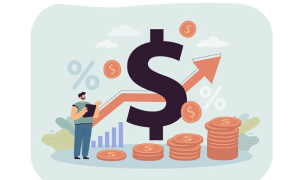Over the last ten years, the popularity of P2P lending increases dramatically and changes the financial services industry significantly. This new method of financing had involved the use of internet technologies, hence excluding mainstream banking companies. Given that behind the creation of such an institution there is thought-provoking idea more and more people ask about economical consequences.
As for the tendencies observed in the evolution of the direct lending mechanisms, this blog post will focus on the following questions: In this paper, we briefly review this trend, and by discussing its potential advantages and drawbacks, it looks at the possibilities of how this path may define the future state of the finance sector.
The surge in direct lending
And this breed of decentralized borrowing and lending has been occasioned by several factors. First, the advancement of the digital world have helped fintech firms to come up with the marketplace that could link the people who have surplus capital that they could use to invest with those that require money to finance their projects.
Thirdly, the consequences of the financial crisis in 2008 motivated traditional banks to be tighter in their financing which has driven consumers and small businesses towards the nontraditional sources of financing.
It is in this regard that direct lending platforms emerged to deal with the more open and flexible channels to help borrowers access credit for personal, business and other purposes.
Financial inclusion and accessibility
Across the world, internet based systems have linked borrowers and lenders directly thereby significantly reducing the hitches in credit procurement. These include the previously deprived opportunities for funding for those, who are outside the formal banking sector or simply could not meet the strict criteria of any bank.
At the same time, these platforms contain non-conventional credit score methodologies which comprise analytics and data learning. This has made it easier to adopt a more flexible method of giving out loans that allows those producers who may not have long credit histories any opportunity.
Impact on traditional banking
New financial platforms for direct business, such as peer-to-peer markets for lending, are problematic for conventional banks. Banks as well as other traditional financial institutions are now forced to come up with strategies that would enable them to compete within this environment.
Thus, banks are looking for collaborations with fintechs, launching their own digital lending businesses, and adopting new customer-oriented strategies. This competition has thus helped consumers, as they have gained the benefits of service and products to suits there needs.
Economic implications
Thus, the impact of the growth of peer to peer lending transcends the financial industry as numerous spheres of the global economy are affected. With the existing trend of the above lending model, the existing impacts are becoming apparent and looming large.
For instance, the petty businessmen and businesswomen can access cash to launch new products or to grow the current businesses while the borrowers personally can use the money for home renovations, education or any other crucial need that they may have.
On the contrary, the high growth of such platforms can be viewed as a problem because default and fraud risks are high. To reduce these risks and ensure that the model promoting innovative lending will be sustainable in the long run, it will be important to have strong and effective rules and regulations and high level of risk management.
Stimulating economic activity
However, one of the most valuable economic effects of the direct lending platforms is the impact on the increase in economic turnover. Since they assist in channelling credit to small traders and individual consumers, such platforms contribute to development.
Entrepreneurs, especially those that operate small businesses get a chance to access more financing to enable them expand the business in terms of new projects, hiring more employees or improving goods or services offered. This in turn may result into employment, increased efficiency and thus economic growth.
Regulatory and risk considerations
However, with these and many more advantages, the rapid emergence of direct lending platforms has been associated with some vices. The first issue that arises is the need to have proper and sufficient pin down regulations to safeguard the investors/borrowers on the one hand as well as the company on the other.
Since investing platforms are outside the conventional system of regulation, it becomes necessary to have regulatory measures that check on fraud, user’s rights, and proper disclosure. There is no doubt that with the quest on how to meet the various objectives, alternatives are created, but this should not lead to anarchy financially.
Also, noteworthy is the focus on risk management in order to address default risk and sustain proper functions of the lending environment. In the development of the industry, constant endeavors to resolve these legal and risk factors will play a significant part in the stability of this sector.







